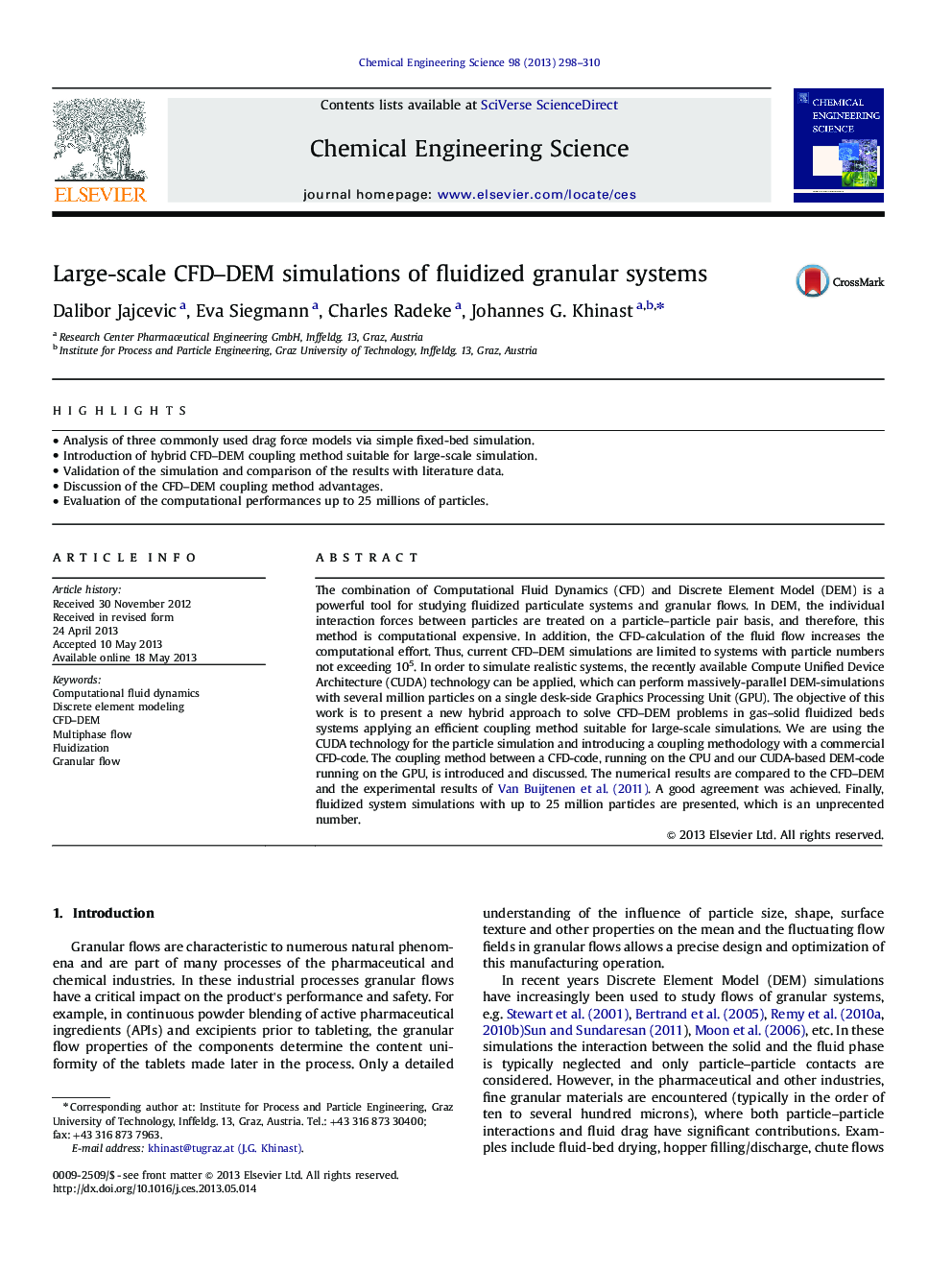| کد مقاله | کد نشریه | سال انتشار | مقاله انگلیسی | نسخه تمام متن |
|---|---|---|---|---|
| 155129 | 456884 | 2013 | 13 صفحه PDF | دانلود رایگان |

• Analysis of three commonly used drag force models via simple fixed-bed simulation.
• Introduction of hybrid CFD–DEM coupling method suitable for large-scale simulation.
• Validation of the simulation and comparison of the results with literature data.
• Discussion of the CFD–DEM coupling method advantages.
• Evaluation of the computational performances up to 25 millions of particles.
The combination of Computational Fluid Dynamics (CFD) and Discrete Element Model (DEM) is a powerful tool for studying fluidized particulate systems and granular flows. In DEM, the individual interaction forces between particles are treated on a particle–particle pair basis, and therefore, this method is computational expensive. In addition, the CFD-calculation of the fluid flow increases the computational effort. Thus, current CFD–DEM simulations are limited to systems with particle numbers not exceeding 105. In order to simulate realistic systems, the recently available Compute Unified Device Architecture (CUDA) technology can be applied, which can perform massively-parallel DEM-simulations with several million particles on a single desk-side Graphics Processing Unit (GPU). The objective of this work is to present a new hybrid approach to solve CFD–DEM problems in gas–solid fluidized beds systems applying an efficient coupling method suitable for large-scale simulations. We are using the CUDA technology for the particle simulation and introducing a coupling methodology with a commercial CFD-code. The coupling method between a CFD-code, running on the CPU and our CUDA-based DEM-code running on the GPU, is introduced and discussed. The numerical results are compared to the CFD–DEM and the experimental results of Van Buijtenen et al. (2011). A good agreement was achieved. Finally, fluidized system simulations with up to 25 million particles are presented, which is an unprecented number.
Journal: Chemical Engineering Science - Volume 98, 19 July 2013, Pages 298–310